-
 Bitcoin
Bitcoin $83,080.8873
-1.14% -
 Ethereum
Ethereum $1,791.4746
-1.45% -
 Tether USDt
Tether USDt $0.9998
0.02% -
 XRP
XRP $2.1324
-0.13% -
 BNB
BNB $592.0388
-1.08% -
 Solana
Solana $119.1957
-3.22% -
 USDC
USDC $1.0001
0.01% -
 Dogecoin
Dogecoin $0.1681
-1.64% -
 Cardano
Cardano $0.6497
-1.94% -
 TRON
TRON $0.2375
-0.61% -
 UNUS SED LEO
UNUS SED LEO $9.0588
-4.96% -
 Chainlink
Chainlink $12.6860
-2.48% -
 Toncoin
Toncoin $3.2620
-3.95% -
 Stellar
Stellar $0.2511
-3.60% -
 Avalanche
Avalanche $17.8165
-2.01% -
 Shiba Inu
Shiba Inu $0.0...01230
-0.03% -
 Sui
Sui $2.2118
-2.95% -
 Hedera
Hedera $0.1616
-2.22% -
 Litecoin
Litecoin $82.0450
-2.73% -
 Polkadot
Polkadot $3.9414
-2.77% -
 MANTRA
MANTRA $6.2727
-0.36% -
 Bitcoin Cash
Bitcoin Cash $300.4768
-0.31% -
 Dai
Dai $1.0001
0.02% -
 Bitget Token
Bitget Token $4.4469
-1.89% -
 Ethena USDe
Ethena USDe $0.9991
0.00% -
 Pi
Pi $0.5875
11.07% -
 Hyperliquid
Hyperliquid $11.8527
-4.06% -
 Monero
Monero $214.0698
-0.86% -
 Uniswap
Uniswap $5.8104
-2.14% -
 OKB
OKB $51.8157
5.85%
How to solve the problem of blockchain expansion?
Blockchain scalability solutions explore Layer-2 scaling (state channels, rollups), sharding, improved consensus mechanisms (PoA, DPoS), protocol optimization, and off-chain computation to enhance transaction speed and efficiency.
Feb 27, 2025 at 03:37 am
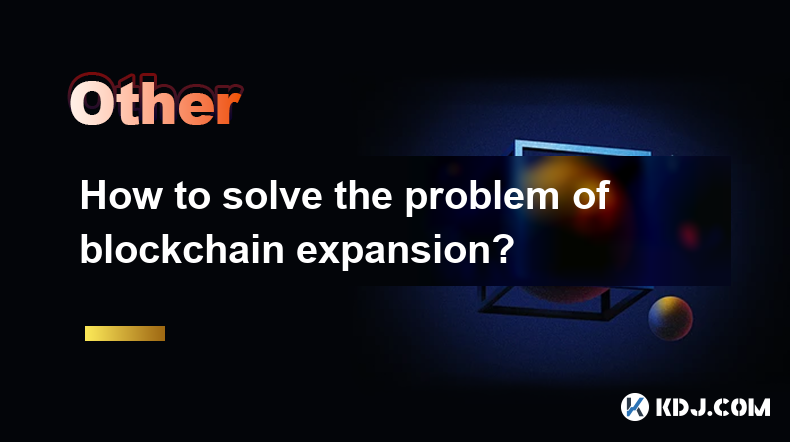
How to Solve the Problem of Blockchain Scalability?
Key Points:
- Layer-2 Scaling Solutions: Exploring techniques like state channels, rollups (optimistic and zk-SNARKs), and sidechains to process transactions off-chain, significantly increasing throughput.
- Sharding: Dividing the blockchain into smaller, more manageable shards to process transactions concurrently, improving scalability and reducing latency.
- Improved Consensus Mechanisms: Analyzing alternative consensus mechanisms beyond Proof-of-Work (PoW) and Proof-of-Stake (PoS) to enhance transaction speeds and efficiency. This includes exploring options like Proof-of-Authority (PoA) and Delegated Proof-of-Stake (DPoS).
- Protocol Optimization: Examining and improving existing blockchain protocols to enhance efficiency and reduce resource consumption. This involves refining transaction validation processes, data structures, and network communication protocols.
- Off-Chain Computation: Utilizing off-chain computation techniques to perform complex computations outside the main blockchain, reducing the load on the network and improving scalability.
Detailed Explanation of Scalability Solutions:
- Layer-2 Scaling Solutions:
Layer-2 scaling solutions are designed to handle transactions off the main blockchain (Layer-1), significantly boosting transaction throughput without compromising security or decentralization. Several prominent techniques exist:
* **State Channels:** Imagine a private, off-chain communication channel between two or more parties. Transactions are conducted within this channel, and only the final result is recorded on the main blockchain. This reduces the load on the main chain dramatically. For example, a payment channel between two users could see hundreds of transactions exchanged without each one needing to be individually recorded on the main chain. The final balance is settled only when the channel is closed. The benefits are speed and reduced fees, but the requirement for participants to remain online and the complexity of managing multiple channels can be limiting factors. Furthermore, the security of state channels relies on the security of the underlying Layer-1 blockchain. If the Layer-1 is compromised, the Layer-2 state channels are vulnerable as well. This approach works well for frequent, low-value transactions between a relatively small number of participants. However, it is less suitable for transactions involving a large number of parties or high transaction values. The complexity involved in managing numerous channels also poses a challenge for widespread adoption.
* **Rollups:** Rollups bundle multiple transactions into a single transaction and submit it to the main blockchain. This significantly reduces the number of individual transactions needing to be processed on the Layer-1. There are two main types:
* **Optimistic Rollups:** Assume that all transactions within a batch are valid. If a fraudulent transaction is detected, a challenge mechanism is triggered, and the main chain resolves the dispute. This method is relatively simpler to implement but requires a challenge period, leading to a delay in finality. The security of optimistic rollups relies on the economic incentives for honest participants to challenge fraudulent transactions.
* **Zero-Knowledge Rollups (ZK-Rollups):** Use cryptographic proofs to verify the validity of transactions without revealing the transaction details. This provides a much higher level of privacy and faster finality compared to optimistic rollups. However, the computational complexity of generating these proofs can be significant, making them more challenging to implement and potentially more expensive. The cryptographic proof ensures that the transactions are valid without revealing the specific details of the transactions. This enhanced privacy is a significant advantage over optimistic rollups, especially for sensitive financial transactions.
* **Sidechains:** Sidechains are independent blockchains that run parallel to the main blockchain. Transactions can be processed on the sidechain and then periodically "pegged" back to the main chain. This offers increased scalability and flexibility, but security relies on the security of the sidechain itself, and bridging assets between the main chain and the sidechain introduces complexities and potential vulnerabilities. Sidechains provide greater flexibility in terms of design and implementation. For instance, a sidechain can be designed to use a different consensus mechanism or implement different features than the main chain. This flexibility can be advantageous in specific use cases.
- Sharding:
Sharding involves dividing the blockchain into smaller, independent pieces called "shards." Each shard processes a subset of transactions concurrently, distributing the workload and increasing throughput. Think of it like dividing a large database into smaller, more manageable databases. Each shard has its own set of validators, reducing the computational burden on individual nodes. However, sharding introduces complexities in terms of data management and cross-shard communication. The process of ensuring data consistency across shards requires careful design and implementation. Furthermore, the security of a sharded blockchain relies on the security of individual shards. A compromise of a single shard could potentially compromise the entire system. The challenge lies in ensuring that the shards operate efficiently and securely while maintaining data consistency across the entire network. Different sharding approaches exist, each with its trade-offs in terms of complexity, security, and performance. Choosing the optimal sharding approach requires careful consideration of the specific requirements of the blockchain system.
- Improved Consensus Mechanisms:
Proof-of-Work (PoW) and Proof-of-Stake (PoS) are widely used consensus mechanisms, but they have limitations in terms of scalability. Alternatives are being explored:
* **Proof-of-Authority (PoA):** Relies on a predetermined set of validators who are trusted entities. This simplifies the consensus process but sacrifices decentralization. PoA is often used in private or permissioned blockchains where a high degree of trust exists among the validators. This approach is suitable for specific use cases where a high level of trust and a smaller number of validators are acceptable. The trade-off between decentralization and efficiency needs careful consideration.
* **Delegated Proof-of-Stake (DPoS):** Allows token holders to vote for delegates who will validate transactions. This reduces the computational burden compared to PoW and improves transaction speed. However, it also introduces the risk of centralization if a small number of delegates control a significant portion of the network. The risk of centralization is a major concern with DPoS. The selection process for delegates needs to be carefully designed to prevent collusion and maintain a degree of decentralization. Furthermore, the security of DPoS relies on the integrity of the delegates. Any compromise of a delegate could potentially lead to a compromise of the entire network.
- Protocol Optimization:
Optimizing existing blockchain protocols can significantly enhance scalability. This involves:
* **Improved Transaction Validation:** Refining the algorithms and processes involved in verifying transactions can reduce processing time and resource consumption. Optimizing transaction validation processes can reduce the latency and improve the overall throughput of the blockchain. This can involve using more efficient data structures and algorithms.
* **Enhanced Data Structures:** Using more efficient data structures for storing and accessing blockchain data can improve performance. This could involve using more efficient data structures to represent transactions and account balances. This optimization can lead to significant improvements in transaction processing speed.
* **Optimized Network Communication:** Improving the way nodes communicate within the network can reduce latency and improve overall efficiency. This could involve optimizing the network communication protocols to reduce bandwidth consumption and improve latency. The network architecture itself can be optimized for better performance.
- Off-Chain Computation:
Off-chain computation involves performing complex computations outside the main blockchain and only recording the results on the chain. This reduces the load on the main chain and enhances scalability. Examples include using trusted execution environments or dedicated sidechains for computation-intensive tasks. This approach is particularly useful for applications requiring significant computation, such as running smart contracts with complex algorithms or processing large datasets. The key is to ensure the integrity and security of the off-chain computation. Mechanisms for verifying the correctness of the results are essential. This requires careful design and implementation to maintain the integrity of the system. The balance between off-chain computation and on-chain verification needs careful consideration.
FAQs:
Q: What is the biggest challenge in blockchain scalability?
A: The biggest challenge is balancing scalability with security and decentralization. Increasing throughput often requires compromising one or both of these crucial aspects. Finding solutions that address all three simultaneously remains a major research and development focus.
Q: Are all Layer-2 solutions equally effective?
A: No. Different Layer-2 solutions have different strengths and weaknesses. The optimal choice depends on the specific requirements of the application, such as transaction frequency, value, privacy needs, and acceptable latency. Some solutions prioritize speed, while others prioritize security or privacy.
Q: Can sharding completely solve scalability problems?
A: Sharding significantly improves scalability, but it doesn't eliminate all challenges. Cross-shard communication and data consistency remain complex issues that require careful consideration. Furthermore, the security of a sharded blockchain depends on the security of each individual shard.
Q: What are the trade-offs involved in choosing a consensus mechanism?
A: The choice of consensus mechanism involves a trade-off between security, decentralization, and scalability. PoW offers high security but is energy-intensive and slow. PoS improves efficiency but can be susceptible to centralization. PoA and DPoS offer further trade-offs between these factors.
Q: How can protocol optimization improve scalability?
A: Protocol optimization focuses on improving the efficiency of the underlying blockchain code and network communication. This can involve refining algorithms, data structures, and communication protocols to reduce resource consumption and improve transaction speeds. It is an ongoing process of incremental improvement.
Q: What is the future of blockchain scalability?
A: The future of blockchain scalability likely involves a combination of Layer-2 solutions, sharding, improved consensus mechanisms, protocol optimization, and off-chain computation. Continuous research and development are crucial to finding innovative solutions that address the ever-growing demand for high-throughput, secure, and decentralized blockchain networks. The field is constantly evolving, and new approaches and technologies are continually emerging.
Disclaimer:info@kdj.com
The information provided is not trading advice. kdj.com does not assume any responsibility for any investments made based on the information provided in this article. Cryptocurrencies are highly volatile and it is highly recommended that you invest with caution after thorough research!
If you believe that the content used on this website infringes your copyright, please contact us immediately (info@kdj.com) and we will delete it promptly.
- The US Government's Strategic Crypto Reserve Will Be Unveiled This Saturday
- 2025-04-06 05:40:12
- Fartcoin (FAR) price soared 32% to trade at $0.5155
- 2025-04-06 05:40:12
- If Shiba Inu Doubles the Market Cap of Dogecoin, It Could Move Close to Surpassing Its Previous All-Time High (ATH)
- 2025-04-06 05:35:12
- USDtb Breaks into the Top 10 Stablecoins by Market Cap, Tether Loses 60% of Market Dominance
- 2025-04-06 05:35:12
- Meme Coin Mayhem: Markets Stagger, But Troller Cat Roars Ahead
- 2025-04-06 05:30:12
- I'm known for my optimism. I try to give people something to build, not just something to worry about.
- 2025-04-06 05:30:12
Related knowledge
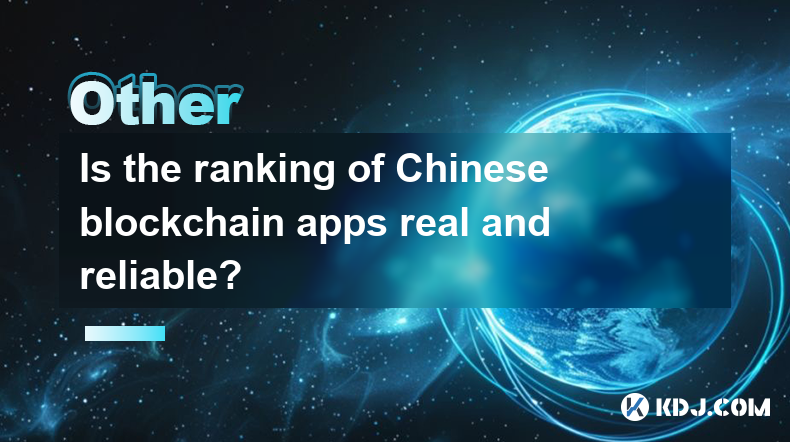
Is the ranking of Chinese blockchain apps real and reliable?
Apr 04,2025 at 09:01pm
The ranking of Chinese blockchain apps has become a topic of interest for many in the cryptocurrency community, as it provides insights into the popularity and adoption of blockchain technology within China. However, the reliability and authenticity of these rankings are often questioned. This article aims to delve into the factors that influence these ...
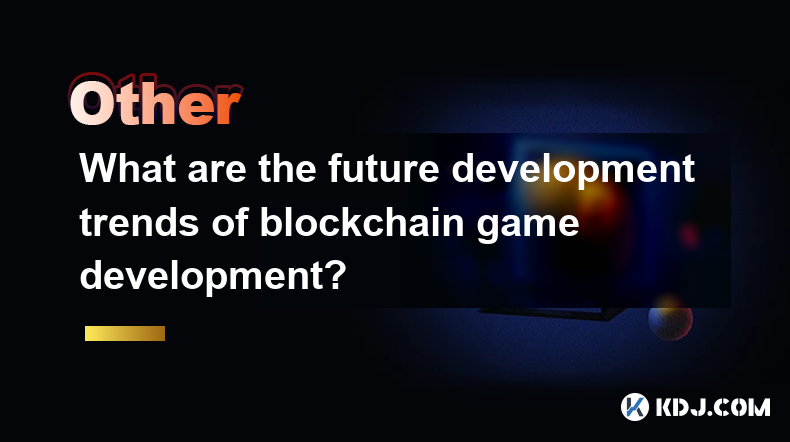
What are the future development trends of blockchain game development?
Apr 03,2025 at 05:00am
Blockchain technology has revolutionized various industries, and gaming is no exception. As we look to the future, several trends are set to shape the development of blockchain games. These trends not only promise to enhance the gaming experience but also to integrate blockchain technology more seamlessly into the gaming ecosystem. Let's explore these t...
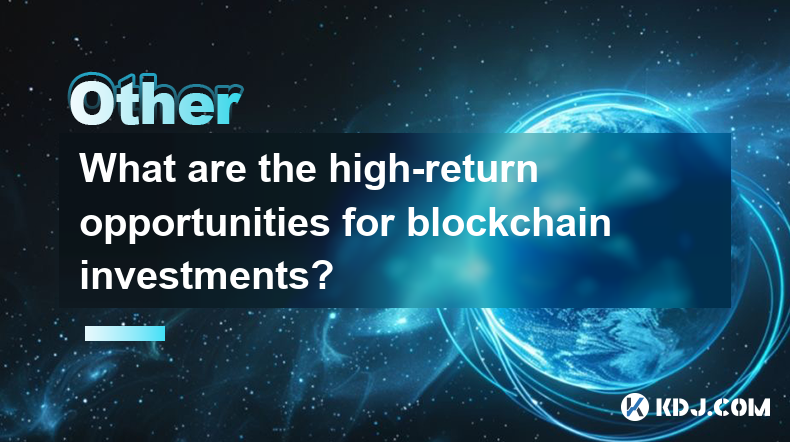
What are the high-return opportunities for blockchain investments?
Apr 05,2025 at 02:35pm
Blockchain technology has revolutionized the financial world, offering numerous high-return investment opportunities. These opportunities span various sectors within the cryptocurrency ecosystem, including cryptocurrencies, decentralized finance (DeFi), non-fungible tokens (NFTs), and blockchain startups. Each of these areas presents unique risks and re...
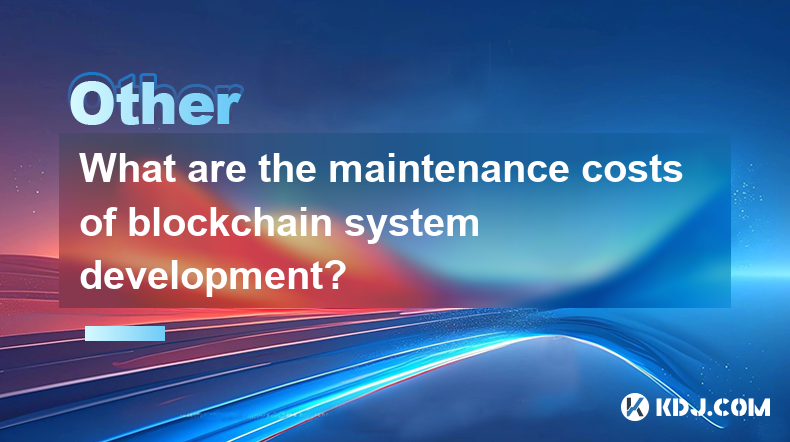
What are the maintenance costs of blockchain system development?
Apr 03,2025 at 06:07pm
The maintenance costs of blockchain system development are multifaceted and depend on various factors. These costs can include technical maintenance, security updates, infrastructure expenses, and personnel costs. Understanding these elements is crucial for anyone planning to develop or maintain a blockchain system. Technical MaintenanceTechnical mainte...
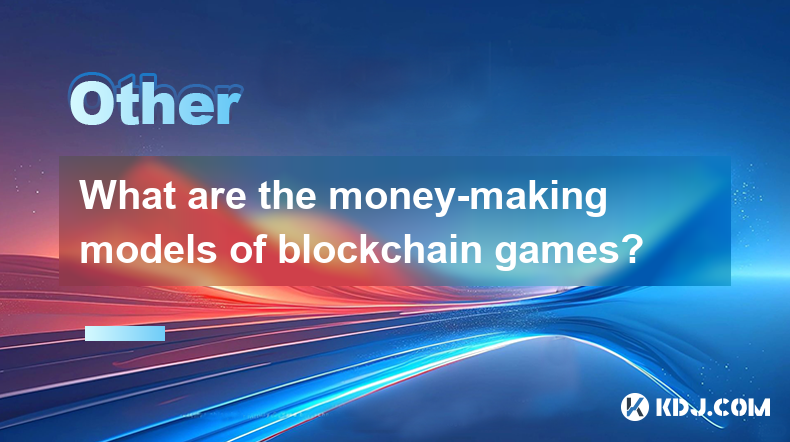
What are the money-making models of blockchain games?
Apr 04,2025 at 02:00pm
Blockchain games have emerged as a revolutionary way for players to earn real money while enjoying their favorite pastime. These games leverage the power of blockchain technology to create unique money-making models that benefit both the players and the developers. In this article, we will explore the various money-making models of blockchain games and ...
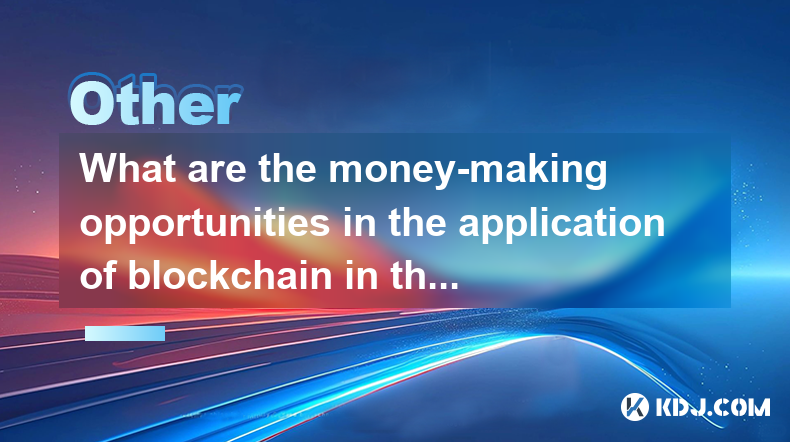
What are the money-making opportunities in the application of blockchain in the field of Internet of Things?
Apr 05,2025 at 10:35pm
The integration of blockchain technology with the Internet of Things (IoT) presents numerous money-making opportunities. Blockchain, with its decentralized and secure nature, can revolutionize how IoT devices interact, manage data, and conduct transactions. This article will explore various avenues where entrepreneurs, developers, and investors can capi...

Is the ranking of Chinese blockchain apps real and reliable?
Apr 04,2025 at 09:01pm
The ranking of Chinese blockchain apps has become a topic of interest for many in the cryptocurrency community, as it provides insights into the popularity and adoption of blockchain technology within China. However, the reliability and authenticity of these rankings are often questioned. This article aims to delve into the factors that influence these ...

What are the future development trends of blockchain game development?
Apr 03,2025 at 05:00am
Blockchain technology has revolutionized various industries, and gaming is no exception. As we look to the future, several trends are set to shape the development of blockchain games. These trends not only promise to enhance the gaming experience but also to integrate blockchain technology more seamlessly into the gaming ecosystem. Let's explore these t...

What are the high-return opportunities for blockchain investments?
Apr 05,2025 at 02:35pm
Blockchain technology has revolutionized the financial world, offering numerous high-return investment opportunities. These opportunities span various sectors within the cryptocurrency ecosystem, including cryptocurrencies, decentralized finance (DeFi), non-fungible tokens (NFTs), and blockchain startups. Each of these areas presents unique risks and re...

What are the maintenance costs of blockchain system development?
Apr 03,2025 at 06:07pm
The maintenance costs of blockchain system development are multifaceted and depend on various factors. These costs can include technical maintenance, security updates, infrastructure expenses, and personnel costs. Understanding these elements is crucial for anyone planning to develop or maintain a blockchain system. Technical MaintenanceTechnical mainte...

What are the money-making models of blockchain games?
Apr 04,2025 at 02:00pm
Blockchain games have emerged as a revolutionary way for players to earn real money while enjoying their favorite pastime. These games leverage the power of blockchain technology to create unique money-making models that benefit both the players and the developers. In this article, we will explore the various money-making models of blockchain games and ...

What are the money-making opportunities in the application of blockchain in the field of Internet of Things?
Apr 05,2025 at 10:35pm
The integration of blockchain technology with the Internet of Things (IoT) presents numerous money-making opportunities. Blockchain, with its decentralized and secure nature, can revolutionize how IoT devices interact, manage data, and conduct transactions. This article will explore various avenues where entrepreneurs, developers, and investors can capi...
See all articles





















































































